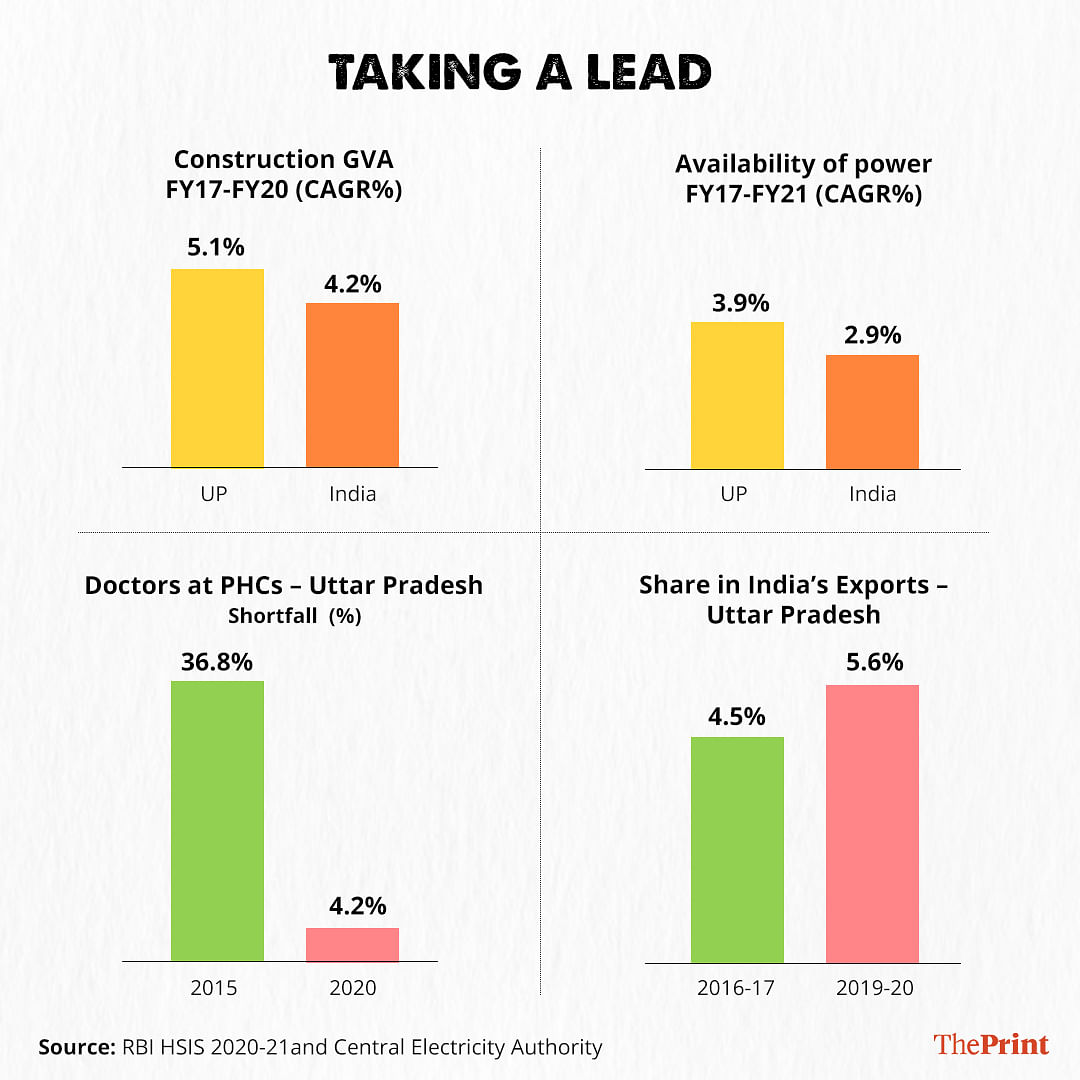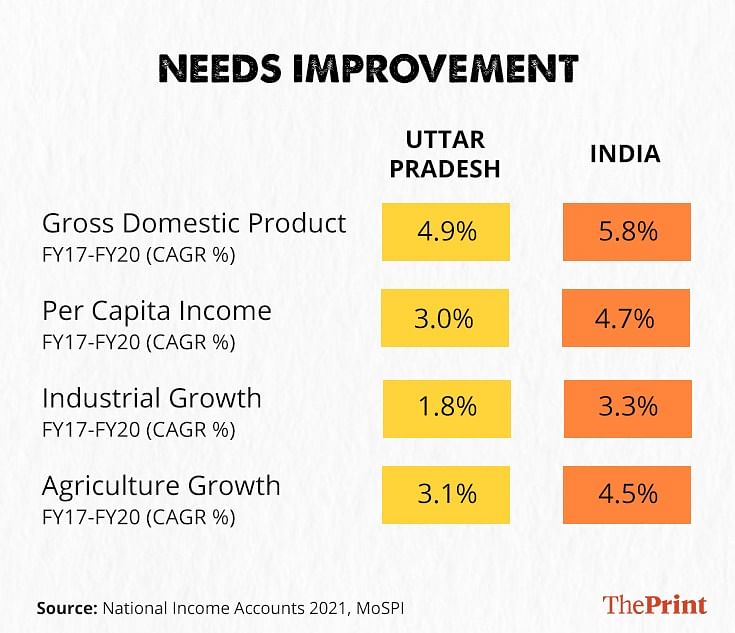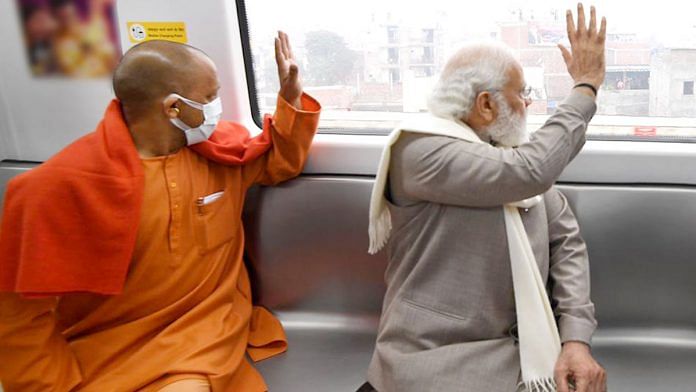The BJP, in its Uttar Pradesh assembly election campaign, has tried hard to take its pitch beyond the Hindutva narrative, projecting economic development and law & order as key themes. Though the voters have been constantly reminded, by both chief minister Yogi Adityanath and Prime Minister Narendra Modi, of the perks of a double-engine government — capable of efficient delivery of centrally sponsored schemes — data on Uttar Pradesh’s economic development shows a mixed bag, with the state lagging behind in some of the key indicators.
Increased central government spending on state infrastructure and social programmes lends some credibility to ‘double engine’ hypothesis: available information indicates that Uttar Pradesh received Rs 2.01 lakh crore in 2017-2022 period, a 47.3 per cent increase over Rs 1.36 lakh crore received in 2012-17. The state has also reportedly been at the top in execution of 44 centrally sponsored schemes and the incidences of violent crimes, a proxy for law & order, declined by 20 per cent between 2018 and 2020.
However, the hard data is mixed on economic performance over the past five years. Though the UP government’s focus on infrastructure projects like building multiple expressways, the Defence Industrial Corridor and electronics manufacturing clusters has resulted in improved performance in some sectors, the overall GDP growth, growth in per capita income, as well as industrial and agricultural sectors have continued to lag behind the national average.
Also read: Yogi’s cows, Modi’s houses, Akhilesh’s jobs: Why this is a more ‘normal’ Uttar Pradesh election
Where more work is required
Though the state’s share of exports has improved, infrastructure development remains weak as per Niti Aayog’s Export Preparedness Index. Enabling infrastructure like the presence of industrial corridor and multi-modal logistic hubs, export promotion industrial parks, trade exhibition centers, R&D infrastructure and internet penetration remains woefully inadequate. The state houses the largest number of micro, small and medium enterprises (MSMEs) in India and has a strong presence of MSME clusters; however, sectors such as defence and electronics need a new set of MSMEs which are efficient and technologically adept. This still necessitates ample development endeavors from the state government to encourage private investment and provide an innovation-led business ecosystem to support growth and create new employment opportunities.


However, there’s a risk that competitive populism in closely contested elections like Uttar Pradesh may take center-stage and limit the ability of the government to focus on longer term investment promotion strategies. For example, the Samajwadi Party — the key opposition party — has promised free electricity and income support, while BJP has made similar announcements around income support and reducing power tariffs. Politically-driven electricity pricing is the primary reason most of India’s state utilities cannot meet demand, and are unable to invest in newer, cleaner generation capacity like solar and wind power. Furthermore, a change in regime is often associated with rollback/modification of some policies of the previous regime, even though the new government may launch similar schemes later.
The election outcome from Uttar Pradesh will also impact the strength of ‘double engine’ in the upper House of Parliament, as the state is set to send 11 members to the Rajya Sabha in 2022. A reversal in electoral fortunes of the BJP in UP may further force the Modi government to go slow on some of its major reforms. Privatisation of State-owned power distribution companies, national monetisation pipeline, implementation of labour codes and amendment of land acquisition Act are few important reforms that require Parliamentary approval. On the other hand, a strong showing by the BJP may reinforce the view that the recent farmers’ protests were led by a relatively small but influential group that lacked popular support.
The 10 March election results assume significance both for the state and the Centre. While the outcome will have a bearing on Modi government’s pace of reform, the state’s development agenda will depend on whether the incoming government focuses on medium-term infrastructure development leading to improved growth and employment generation, or squanders the resources on populist schemes.
Mayank K. Jha is a senior consultant for policy at the Wadhwani Foundation in India. Views are personal.
(Edited by Anurag Chaubey)



